A Winter Wonderland for Snowshoeing
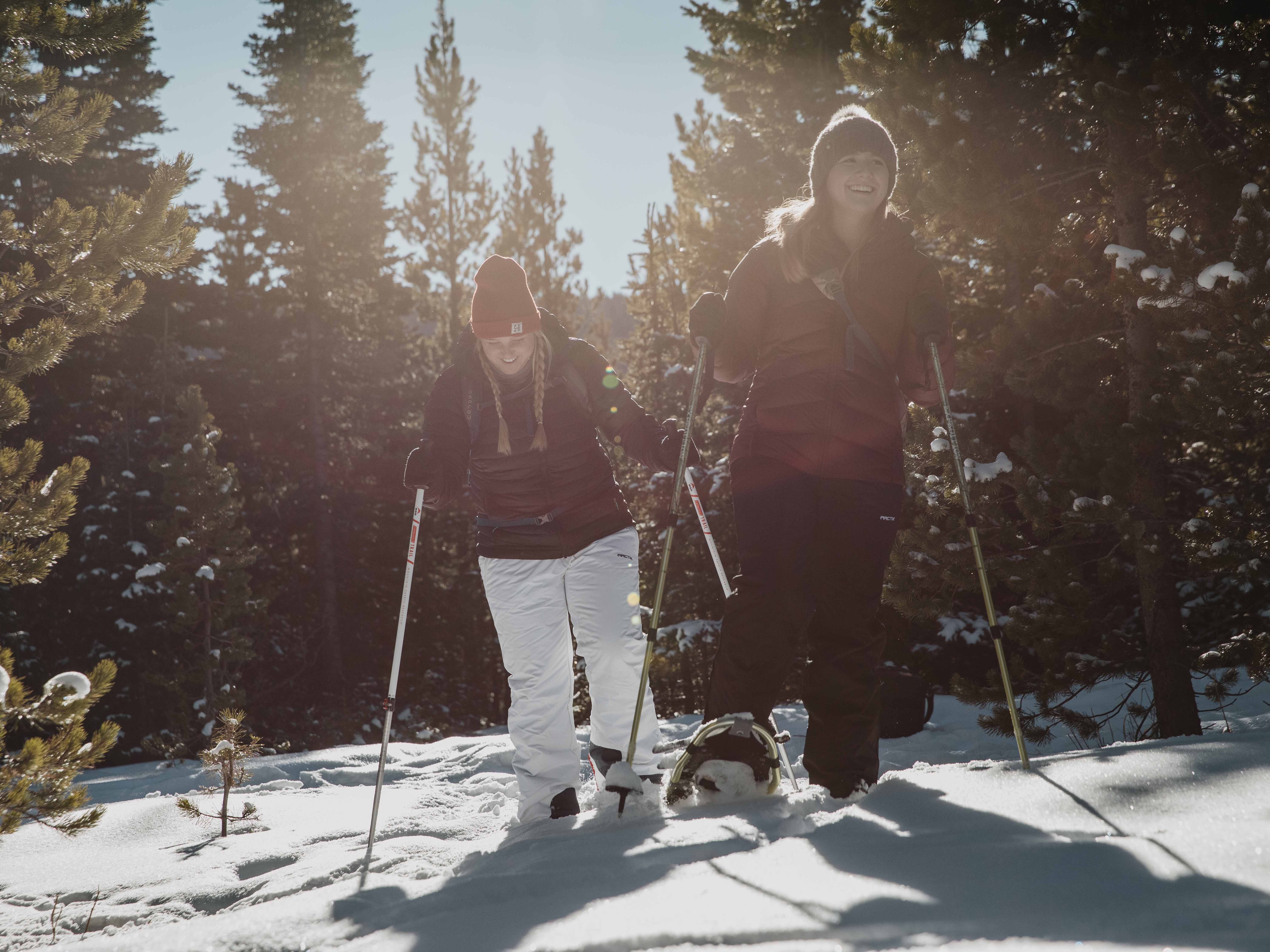
Snowshoeing from Monarch to Kings Hill Pass offer Opportunities for Everyone
by Amy Grisak
Even when the prairie is clear of snow, the Little Belt Mountains are a winter wonderland for snowshoeing enthusiasts. It doesn’t matter if you’re a beginner or someone looking for an uphill, heart-pounding outing, the trails from Monarch to Kings Hill Pass offer exceptional opportunities for everyone.
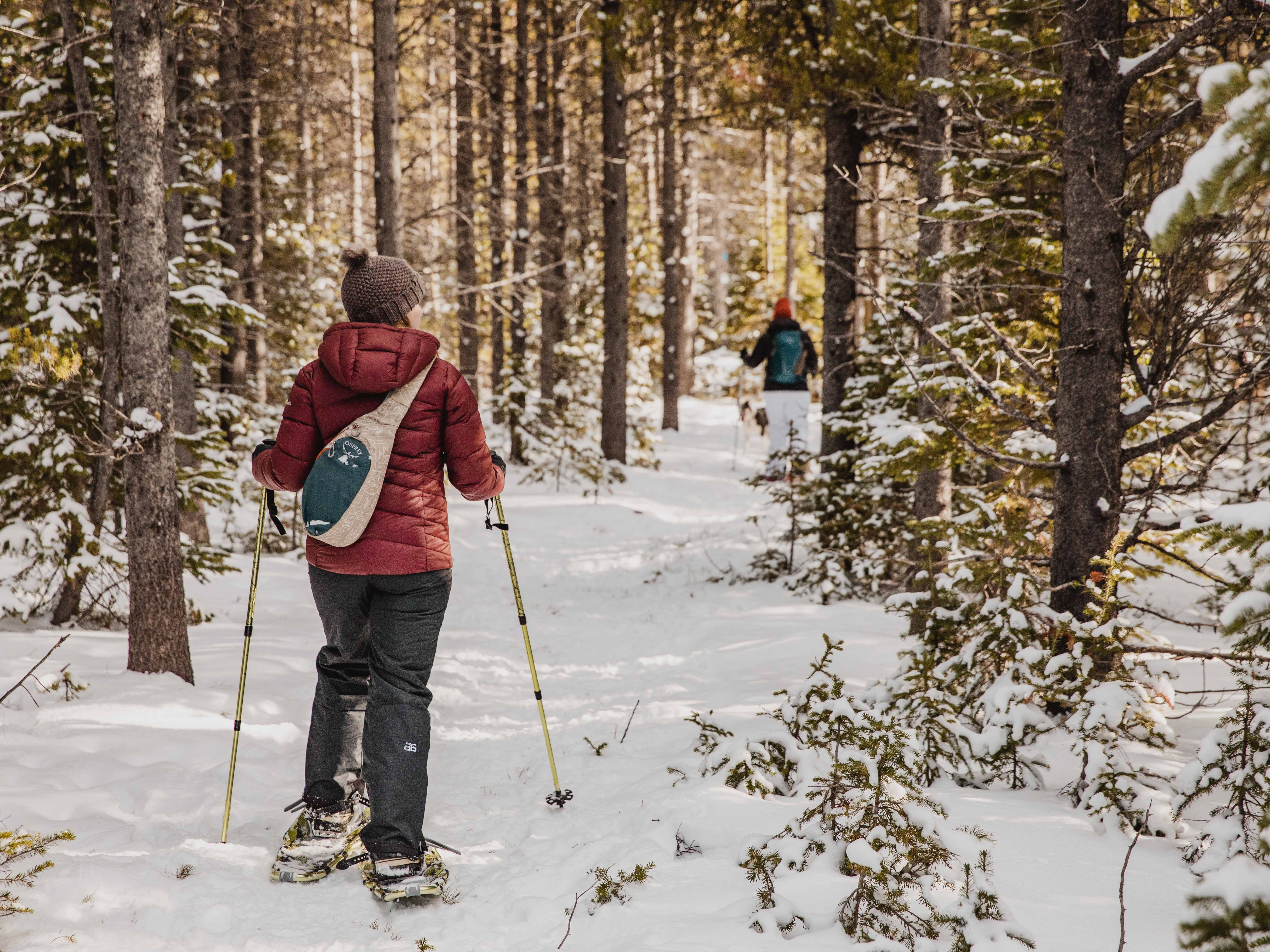

Be Prepared
As with any winter sport, there are a few recommendations to ensure a safe and comfortable outing. Besides snowshoes picked for your size, poles with snow baskets are a handy accessory to aid in balance as well as forward momentum.
Looking for performance snowshoes that handle any snow condition? Check these out.
Footwear is your next consideration. An insulated, water-resistant winter boot is a good choice to keep your feet warm and dry, although some snowshoers use waterproof hiking boots with gaiters to keep the snow from soaking through them. Don’t forget warm, wool or synthetic fabric socks. Avoid cotton since it retains the moisture if your feet sweat, possibly causing them to become cold when you stop moving.
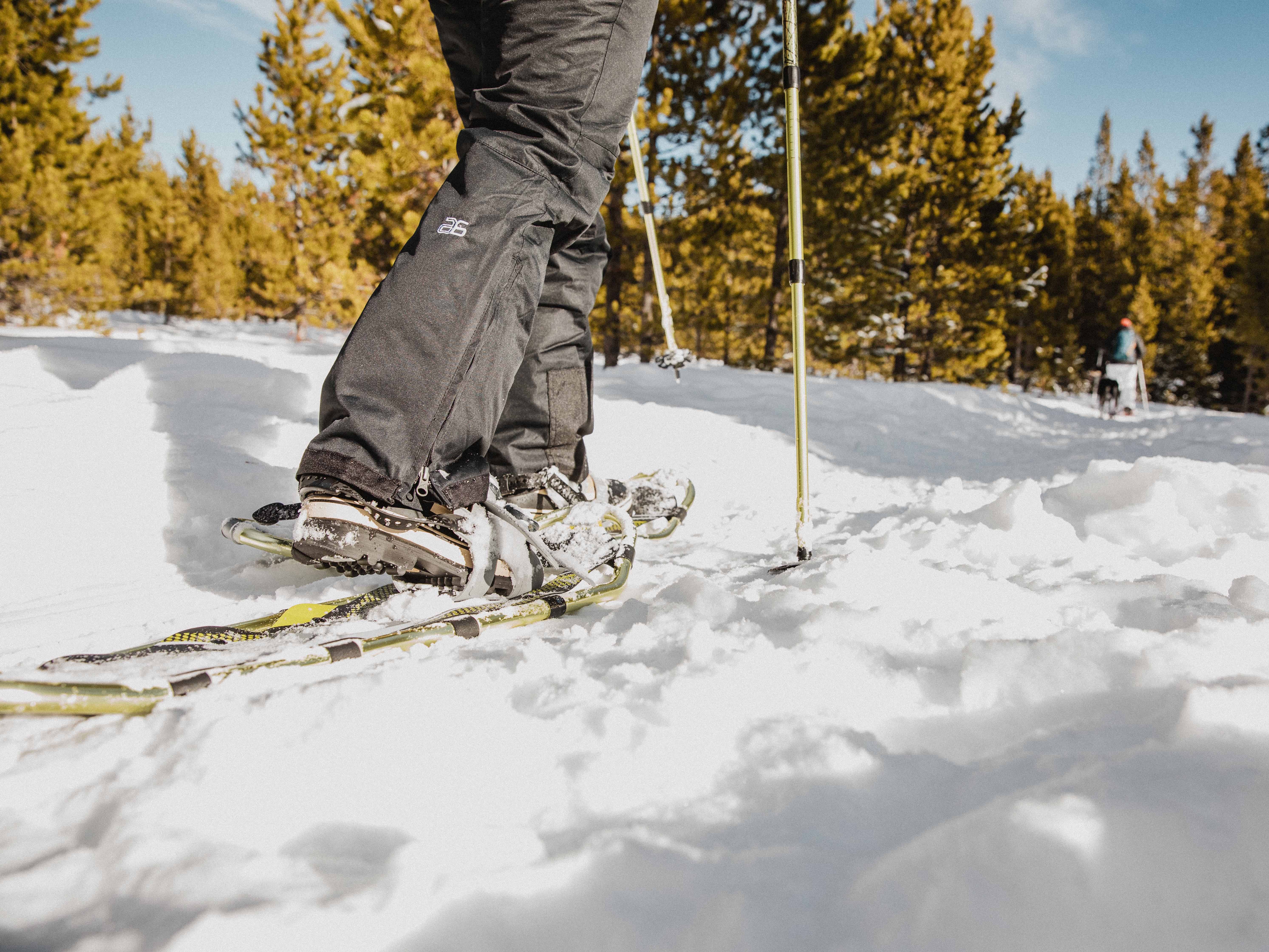

Dress in non-cotton layers that allow you to remove clothing as you heat up, and add it before you chill when you stop to rest. Long underwear is like a second skin for Montana residents during the winter, and insulated snow pants or bibs work great to stay warm and dry as an outer layer on the bottom. For the upper layers, consider thermal underwear, wool or fleece tops, along with possibly a vest and a warm outer coat. The beauty of layers is you can always peel off something if you’re too warm.
Don’t forget your hat, plus gloves or mittens. Plus, a few handwarmers in the pack often come in handy after a lunch break. When the temperature is particularly cold, a face covering of some sort, particularly a neoprene face mask or balaclava is a welcomed addition.
Want warm gloves and layers to keep you cozy? Shop apparel here.
In your pack, bring lunch and high-energy snacks, water (an insulated water bottle works great in this situation), ways to start a fire, an emergency blanket, whistle, headlamp with extra batteries, knife, hand warmers, duct tape (to fix everything from blisters to a broken binding), and first aid kit. Always consider what you might need in the event that plans didn’t work out as intended and you have to spend the night on the trail. And, on a brighter note, keep in mind that we have many blue-bird days with bright sun so sunscreen, lip balm, and sunglasses are a necessity.
It’s also a good idea to carry a lightweight shovel — in the unlikely, yet dangerous event that someone slips into a tree well or other hazard — as well as an avalanche beacon. Although the Little Belts are considered generally safe terrain, there are times when snow conditions and slope create a recipe for a slide.
Even though these trails are typically well-marked and easy to follow, it’s also important to have a navigation system, such as a map and compass, that does not require batteries. There is also an excellent, free map for the “Little Belts Mountain Trail Map 2014” that shows many of these trails on avenza.com.
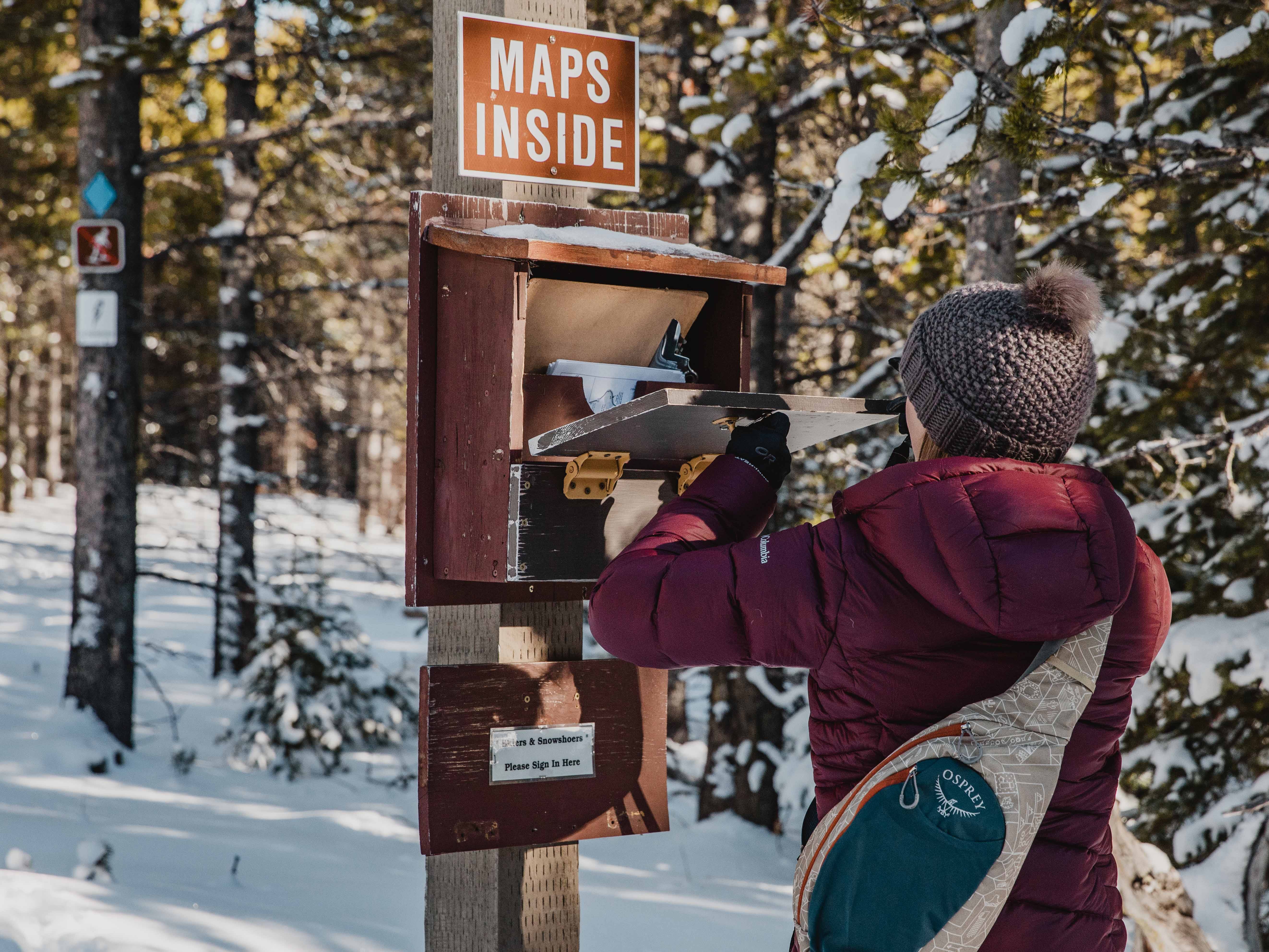

It’s Time to Pick Trails
Silver Crest Winter Recreation Area
We are fortunate to have an exceptional winter playground for snowshoeing and cross-country skiing at the Silver Crest Winter Recreation Area trail system less than two miles before you reach Kings Hill Pass. Although the trails are predominately groomed for cross-country skiers, there is an un-groomed interior loop specifically for snowshoers. The longer portion of this section is 3-miles long, while a shorter loop cuts the trail in half and is perfect for beginners, including families with young children. Park in the large parking area at the Kings Hill Winter Recreation Area and follow the signs to the snowshoe loop. This map gives you an idea of the location of the trail within the system.
Porphyry Fire Lookout
If you’re looking to increase your heart rate with the payoff of terrific views, head to the Porphyry Peak Fire Lookout. Park at the Kings Hill Pass parking area on the right (west) side of Hwy 89 just before you reach Showdown Ski and Snowboard Area. Depending on the time of the year, you will most likely have to walk around the massive snow piled along the side to reach the trail. Go around the closed gate and follow the path along the edge of the Golden Goose run of Showdown. Constructed in 1933, the lookout, which is situated at 8192-feet in elevation, provides stunning views over the Showdown and the surrounding Helena-Lewis and Clark National Forest. This is roughly a 4 to 5-mile trek up and back following the same path both ways.
O’Brien Creek
Starting at the Kings Hill Pass parking area, this a roughly 7-mile course with a gradual elevation loss following the O'Brien Creek drainage into Neihart, which requires you to have a vehicle parked there to shuttle back to the beginning. There aren’t the dramatic views, such as on Porphyry, but this is a beautiful, peaceful area. This trail does share the area with snowmobilers for the first part, so keep an eye out for the blue diamond signs to indicate that you are on the snowshoe/cross country ski path.
Memorial Falls
Everyone loves waterfalls and they are even more magical in the winter. Drive 2.4-miles past Neihart to find the Memorial Falls parking area on the left-hand (east) side of the road. It is a large space and there is a vault toilet available. Sometimes Memorial Falls can be walked without snowshoes, but keep in mind that the trail is often very icy making them handy to grip the slick trail. Even in the winter, look for cutthroat trout sunning themselves near rocks in belt Creek below the bridge. From there, it is a quarter of a mile walk along the creek to the first set of falls. This is a super easy outing for any age or fitness level with a great photo opportunity at the end. For those who wish to continue to the second set of falls, cross the wooden plank over the water and continue up the hill on the other side. It is a little bit more of a climb, but the second falls are equally as beautiful. In the winter they are sometimes frozen with the water still running beneath the ice.
Jefferson Creek
Another very easy outing for the entire family is Jefferson Creek, barely a mile south from the Memorial Falls parking area on Hwy 89. This is a relatively flat out (gradually gaining roughly 500 feet) and back hike that can be anywhere from 1-mile to nearly 10-miles in a round-trip. There isn’t stunning scenery, but it's a good place to stay out of the wind and you can see some really neat winter landscapes up close. Plus, since it’s a road that is closed to vehicles in the winter, it is a wide path making it an easy, safe place to take younger children or groups of newbies.
Paine Gulch
In heavy snow years, a very accessible snowshoe trail is Paine Gulch just outside of Monarch. Park in the large parking area near the Ace-in-the-Hole historical information sign, then walk approximately 100-yards south along Hwy 89 to the trailhead sign on the left (east). The trail winds its way through the trees, which provides good cover on a windy day, and it's easy to follow along the drainage. In less than 2-miles, it opens up into a previously burned area that provides lovely views of the ridge. You can continue as far as 6-miles one way, or turn around anytime you wish. The trail is narrow in some of the spots going through the wooded section, but this is a fairly gentle walk with less than 600-feet elevation gain.
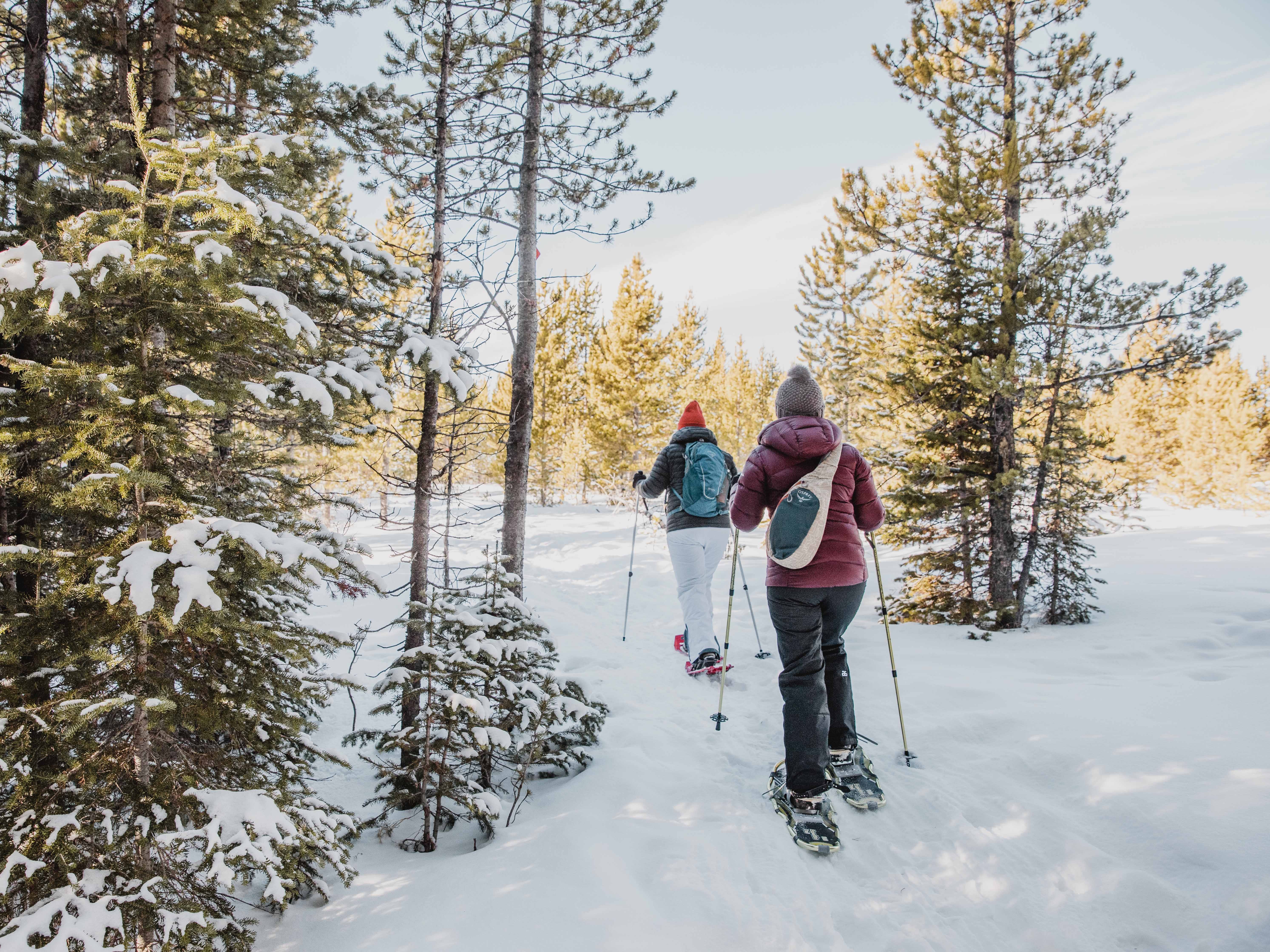

These are a sampling of the myriad of snowshoeing options available around Kings Hill and the Little Belts, in general. For more information on specific trails, as well as conditions in the area, call the Belt Creek Ranger District Office at (406) 236-5100.
